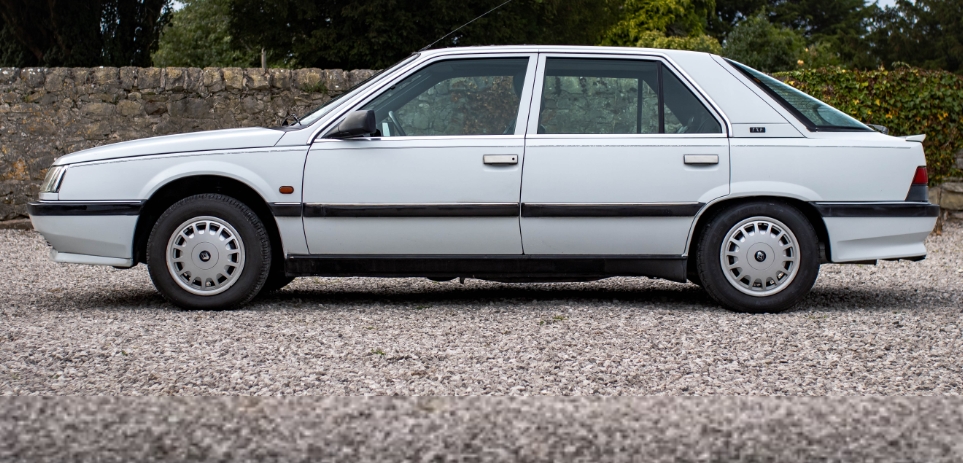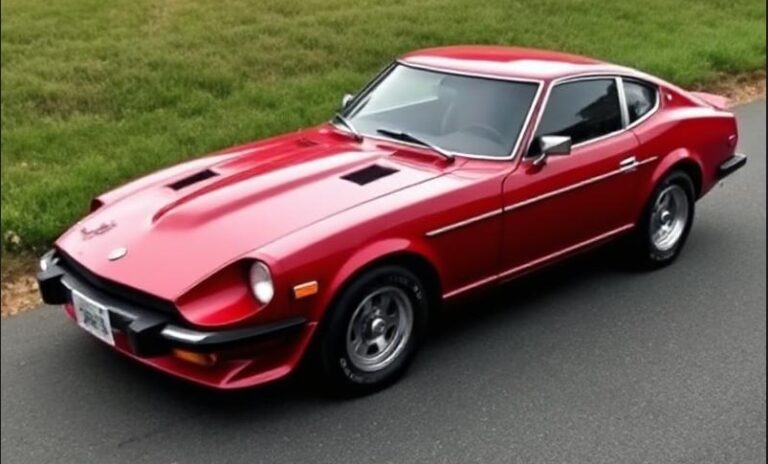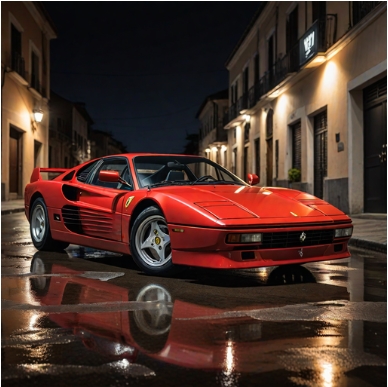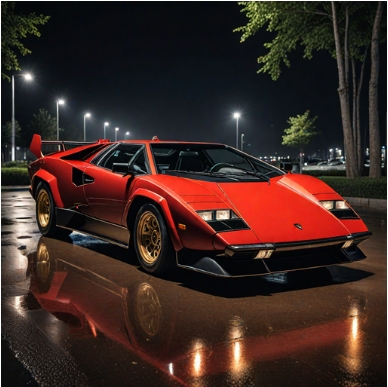The Avant-Garde Executive: Charting the Evolution of the Renault 25
In the early 1980s, the executive car market was a battlefield dominated by the stoic, rear-wheel-drive saloons of Germany. BMW, Mercedes-Benz, and Audi had carved out a seemingly unassailable niche built on engineering prowess, brand prestige, and conservative styling. Into this arena stepped Renault, a company known for innovation, occasional eccentricity, and a firm belief in front-wheel drive. Their weapon was the Renault 25, a car that was not merely an evolution of its predecessors, the 20 and 30, but a revolutionary statement of French ambition. Launched in 1984, the R25 sought to challenge the Teutonic order not by imitation, but by offering a distinctly different vision of luxury: one defined by aerodynamic efficiency, technological audacity, and unparalleled practicality. This is the story of its evolution, from a bold newcomer to a refined and multifaceted flagship.
The Genesis: Project 129 and a Vision of the Future
Development of the Renault 25, internally codenamed Project 129, began in the late 1970s. The brief was clear: create a single, modern, and aspirational vehicle to replace the ageing and somewhat confusing Renault 20/30 range. The design team, led by Gaston Juchet and influenced by the legendary Robert Opron (of Citroën SM and CX fame), focused on two groundbreaking principles.
The first was aerodynamics. In an era still dominated by boxy designs, the R25 was sculpted in the wind tunnel. Its sleek, flowing lines, flush-fitting glass, and integrated details resulted in a remarkable drag coefficient (Cd) of just 0.28 for the most efficient models, a figure that shamed sports cars of the day and contributed significantly to fuel economy and high-speed stability.
The second, and perhaps most iconic, feature was its “aero-dynamic” liftback design. While technically a five-door hatchback, the R25’s profile brilliantly mimicked a traditional three-box saloon. The masterstroke was its enormous, wrap-around, curved rear windscreen, a complex and expensive piece of glass that became the car’s visual signature. This design offered the elegant silhouette of a saloon with the cavernous, versatile load space of a hatchback, a combination its German rivals simply could not match.
Phase 1 (1984–1988): The Bold Arrival
The Renault 25 made its public debut in late 1983 and went on sale in the spring of 1984. The initial range was comprehensive, designed to cater to a wide spectrum of buyers, from company fleet managers to private customers seeking V6 power. The interior was just as futuristic as the exterior, featuring a distinctive dashboard with a prominent centre console and, on high-end models, a synthesized voice computer that would issue warnings like “Door open” or “Low fuel level,” a feature that became a famous (and sometimes lampooned) symbol of 1980s automotive tech.
The Phase 1 model lineup was as follows:
TS/GTS: These were the entry points into the R25 family. Both were powered by the 2.0-litre (1995cc) Douvrin four-cylinder engine with a carburetor, producing a modest 103 horsepower. The TS (Traitement Spécial) was the spartan base model, while the GTS (Grand Tourisme Spécial) added more creature comforts like central locking, electric front windows, and superior upholstery, making it the volume seller of the range.
GTD: Acknowledging the importance of the diesel market, particularly for fleet use, the GTD (Grand Tourisme Diesel) featured the 2.1-litre (2068cc) J8S naturally aspirated diesel engine, producing 64 horsepower. It was economical and robust, if not particularly swift.
GTX: Positioned as the luxury four-cylinder model, the GTX was equipped with a larger 2.2-litre (2165cc) fuel-injected engine producing 123 horsepower. This model provided a significant step up in performance and refinement over the GTS and came with a higher level of standard equipment, including alloy wheels and optional air conditioning.
V6 Injection: The flagship at launch. This model used the 2.7-litre (2664cc) variant of the Peugeot-Renault-Volvo (PRV) V6 engine, producing 144 horsepower. The V6 Injection was not about raw speed but smooth, effortless cruising. It was lavishly equipped with velour upholstery, the talking computer as standard, and a full suite of electric features, positioning it as the comfortable long-distance tourer of the range.
Turbo-D/Turbo-DX: Introduced shortly after launch, these models used a turbocharged version of the 2.1-litre diesel engine, boosting power to a much more respectable 85 horsepower. The Turbo-D and the better-equipped Turbo-DX transformed the diesel R25 from a plodding economy car into a capable motorway cruiser with excellent fuel efficiency.
V6 Turbo (1985): This was the game-changer. Introduced in 1985, the V6 Turbo elevated the R25 into a genuine performance saloon. It utilized a smaller, 2.5-litre (2458cc) version of the PRV V6, but with the addition of a turbocharger, it unleashed an impressive 182 horsepower. This allowed the car to sprint from 0-60 mph in under 8 seconds and reach a top speed of over 140 mph, making it a true threat to the BMW 5-Series and Mercedes-Benz E-Class on the German Autobahn. It was visually distinguished by unique alloy wheels, a subtle boot spoiler, and a more aggressive front valance.
In 1986, a special Limousine version was introduced. Built by coachbuilder Heuliez, it featured a 22.7 cm longer wheelbase, providing vast rear legroom. Available primarily in V6 and V6 Turbo guises, it catered to dignitaries and chauffeur-driven clients, further cementing the R25’s flagship status.
Phase 2 (1988–1992): Refinement and Peak Performance
By 1988, after four successful years and over half a million units sold, the Renault 25 received a significant facelift to keep it competitive. The changes were more than skin deep. Externally, the front end was softened with a new grille and wider headlights, while the rear featured new, smoked tail light clusters.
The most dramatic change, however, was inside. The quirky, angular Phase 1 dashboard was replaced with a more organic, flowing design that was both more modern and more ergonomic. The materials were upgraded, and the overall fit and finish were improved in response to criticisms of the earlier models. The engine range was also thoroughly revised and the trim level designations were streamlined.
The Phase 2 model lineup included:
TX: The new entry-level petrol model. It initially used the carbureted 2.0-litre engine, but this was soon replaced by a 12-valve, fuel-injected 2.0-litre engine producing a healthier 136 horsepower in the TI model. A single-point injected TX model with 107 horsepower sat below it. The 2.2-litre fuel-injected engine from the old GTX was now found in the TXE.
TD/Turbo-D: The diesel lineup continued with the naturally aspirated TD and the 85 hp Turbo-D. The range was later supplemented by the Turbo-DX, which maintained the same power but offered a higher specification.
V6 Injection / TX V6: The flagship naturally aspirated V6 was upgraded from 2.7 litres to a new 2.9-litre (2849cc) version of the PRV engine. Power rose slightly to 160 hp (later 153 hp with a catalytic converter), but the focus was on improved torque and refinement.
V6 Turbo (Phase 2): The performance hero received a significant power boost. Now fitted with a catalytic converter as standard, power climbed from 182 to an impressive 205 horsepower. This made the R25 V6 Turbo one of the fastest saloons in the world, capable of exceeding 150 mph. To handle the power, a four-wheel-drive V6 Turbo Quadra version was briefly offered, though it remains exceptionally rare today.
Baccara (1990): The ultimate expression of R25 luxury. Introduced towards the end of the car’s life, the Baccara trim was available on the V6 Injection and V6 Turbo models. It was a direct riposte to the high-end trims from German and British manufacturers. The Baccara featured a cabin swathed in opulent Connolly leather, genuine elm wood inserts on the doors and dashboard, automatic climate control, a premium sound system, and a bespoke leather-trimmed garment carrier that clipped neatly under the parcel shelf. It was the R25 in its most luxurious and sophisticated form.
The American Cousin: Eagle Premier and Dodge Monaco
No history of the Renault 25 is complete without mentioning its American adventure. Through its partnership with American Motors Corporation (AMC), Renault developed a version of the R25 platform for the North American market. Penned by Giorgetto Giugiaro’s Italdesign, the car was launched in 1987 as the Eagle Premier. While it shared its longitudinal front-wheel-drive layout, suspension, and PRV V6 engine with the R25, it featured unique, more conventional notchback styling. After Chrysler’s acquisition of AMC, the car was later rebadged and sold as the Dodge Monaco from 1990 to 1992. Though commercially unsuccessful, it stands as a fascinating testament to the global ambitions and engineering flexibility of the R25 platform.
.
NO MORE dead batteries with this:

.
Legacy and Conclusion
Production of the Renault 25 ceased in 1992, with 780,976 units having rolled off the production line in Sandouville, France. It was succeeded by the equally innovative Renault Safrane.
Today, the Renault 25 stands as a high-water mark for French automotive design in the 1980s. It was a car that successfully blended futuristic aesthetics with everyday practicality. It brought advanced aerodynamics to the executive mainstream, bravely championed the versatile liftback layout in a conservative segment, and was never afraid to be technologically bold. From the economical GTD fleet car to the tire-smoking V6 Turbo and the opulent Baccara, the R25 evolved into a remarkably complete and capable range. It was, and remains, a testament to a time when Renault dared to challenge the established order, not by following the rules, but by writing its own.







